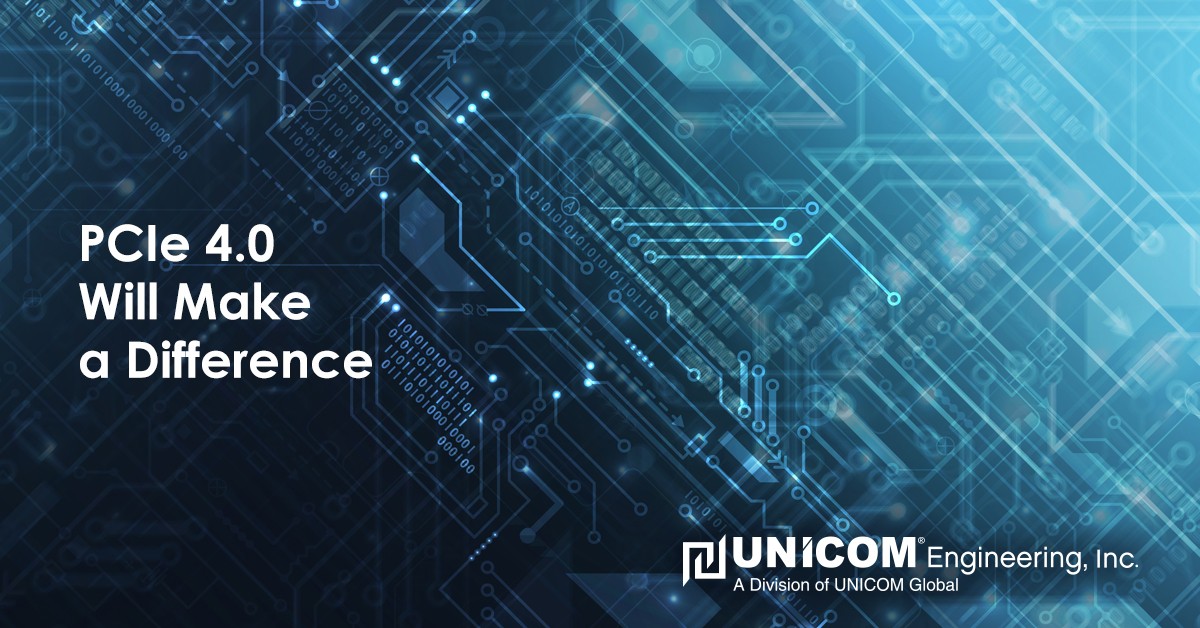Remember when your office wasn't down the hall? Whether you traveled by car, train, or even just an elevator, getting there in time always required waiting. Ironically, while the Pandemic may have lessened or eliminated our commute times, remote work and other factors have created more data traffic than ever in our servers.
Thankfully, world microchip leader Intel is about to help change things for the better. Whereas the vast majority of motherboards have been limited by the Peripheral Component Interconnect express protocol (PCIe) version 3.0, Intel's latest generation of memory, CPUs, and SSDs will support the newer PCIe 4.0 protocol. As a result, the speed at which the server components can communicate is about to double.
PCIe 4.0 Delivers More Than Increasing Bandwidth
The current PCIe 3.0 standard supports 32 gigabits per second (GBS) data transfer bandwidth between processors and other motherboard-connected devices such as memory, hard drives, and video cards. If this sounds fast, remember that today, we ask computers to handle more data than ever. Thanks to IoT, AI, and 5G, today's servers must process more data and perform more complex calculations than they ever have before. As you can guess, evolving technologies are causing an explosion in the volume of data populating our machines.
Consider the analogy of a small town. For remote, rural localities, two-lane highways work just fine. When they grow in population, however, expansion is needed. The same holds for data residing on your servers. Older formats like PCIe 3.0 work fine until you have too much data to send, receive, and process. Fortunately, with PCIe the 4.0 standard, the data transfer bandwidth between peripherals doubles from 32 to 64 GBS. This improvement means your critical hardware components and apps get a superhighway on which to transfer data.
Complex Computing
You might be wondering, what in practical terms does this new technology bring to your application and its users? Processors, memory, and other connected components were, to date, designed for the 3.0 standard. By adopting the 4.0 standard, CPUs, GPUs, SSDs, and other hardware can trade more data at once. It's like the lanes on your servers' highways have been doubled—an upgrade that not only makes for faster processing but allows for more complex computing like AI.
Enhanced Real-Time Computing
When CPUs can receive more data via PCIe 4.0, they can do things like multitasking and running more calculations. Memory-intensive applications can feed up to twice as much data from SSDs to the CPU over a given time. This faster flow of information enables applications that work with time-sensitive data (like Credit card fraud detection) to deliver more timely insights. Also, Graphics Processing Units, or GPUs, can potentially perform better video processing than ever.
Practical Benefits of PCIe 4.0
Besides improvements in processing, there are also other practical reasons to build your newest servers on PCIe 4.0 architecture. You'll enjoy improvements in both power and spatial efficiency.
With PCIe 4.0, thanks to the circuitry's increased signal reliability, the motherboard's power needs are lower. And less power means less heat. As a result, the CPU can require fewer components to cool it.
And in addition to cooling down operations on the motherboard, a PCIe 4.0 bus allows for more expansion card slots. Therefore, more drives or RAID cards are available per server. Ultimately, you can optimize rack space by getting more out of each server, further lowering power needs and hosting expenses.
Not to Worry - PCIe 3.0 Components Won't Become Obsolete
Does upgrading to PCIe 4.0 make all of your older expansion cards obsolete? Thankfully no. PCIe 4.0 card slots are backward compatible. Therefore, older PCIe 3.0 devices can be plugged into and used with newer motherboards. When this is done, however, the older components run at their older speeds.
With industry maven Intel adopting the standard, look for a flood of component manufacturers to follow suit making your choice to standardize your newer equipment in PCIe 4.0 very easy.
PCIe 4.0 is About to Become Very Relevant
As you may know, PCIe 4.0 and even higher bandwidth standards have existed for some time. What's of note is that Intel will bring the standard to the mainstream with its commanding influence on the industry. Therefore, PCIe 4.0 isn't a wishlist item. It's a technology that can begin benefitting your organization this year—not at some indeterminable date in the future.
Intel's latest generation of Xeon Scalable CPUs, Optane Memory, and SSDs are all designed to connect via PCIe 4.0. As an Intel Technology Provider, as well as a Dell Technologies OEM Solutions Titanium Partner, UNICOM Engineering has been driving seamless transitions with our partners for decades. Learn more about how UNICOM Engineering can help you transition to next-generation technologies and leverage PCIe 4.0. Contact us for more information by visiting our website and scheduling a consultation.
